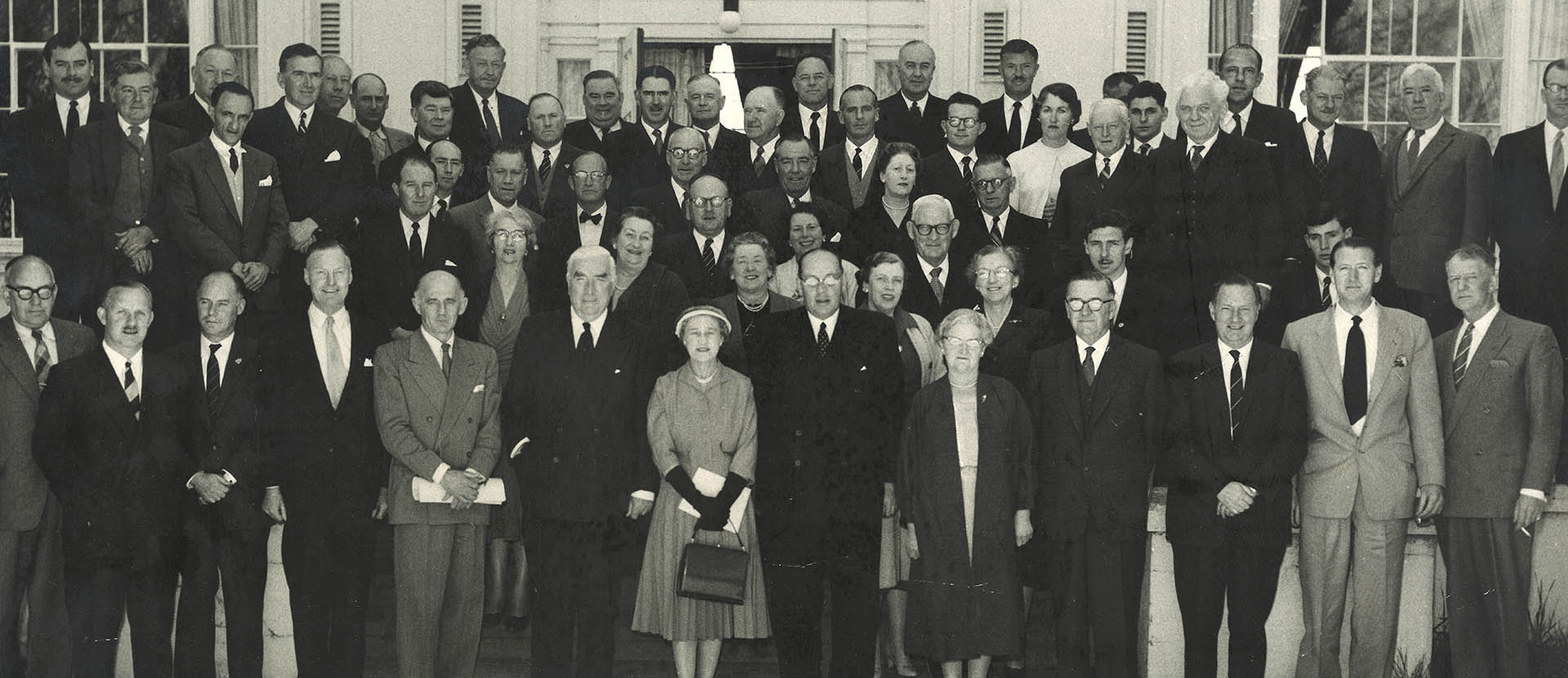
History
The Role of Women in the Formation of the Liberal Party of Australia
Women in the New South Wales Division have made an invaluable contribution to the Liberal Party of Australia since its formation in early 1945, after the amalgamation of the Liberal Democratic Party, the UAP and the Commonwealth Party. The newly consolidated party also incorporated the highly regarded Australian Women’s National League, which had existed in various forms since 1902. The group had traditionally been instrumental in the election of conservative and liberal women to parliaments and local councils across the nation. The League was committed to supporting candidates who advocated liberal and patriotic values, regardless of gender—these women were leaders of gender equality.
The Party was a progressive force, with 1949 campaign advertising making explicit reference to women and women’s issues. This was unusual for the time period, and the Liberal Party won national government convincingly. They were able to retain it for over two decades.
The inclusion of the Women’s National League also lent structure to the Liberal Party, with very specific requirements for female members to be included throughout the organisation. At the senior organisational level of the Party, women have had effective representation through the Women’s Council and Branches. However, there is also a provision in the Party's New South Wales Constitution for a female State Vice-President and for a minimum number of women delegates to Executive. Since 1995 selection panels for the Legislative Council and Senate have had two delegates from each State and Federal electorate respectively - one is to be female and one is to be male.
Beginnings of the NSW Women’s Council and Prominent Members
The first President of the New South Wales Women’s Council (NSWWC) was Mrs Edith Shortland, with meetings in the mid 1940s being held in Sydney. Founding and early members also included Joy Faunce, Roberta Gallagher and Phyllis Little. Miss Gallagher also represented the Federal Women’s Committee at Federal Executive level in 1947 and 1948.
The second President was the Hon Eileen Furley MLC, who was also chairman of the Federal Women’s Committee in 1954 and 1959. In November 1962 Mrs Furley (a prominent member of the NSW Division since its formation) was the first woman in the post-war years to be elected to the Legislative Council.
Maureen Giddings chaired the Federal Women’s Committee from 1977-80 and Chris McDiven AM from 1994-97. Under new amendments to the Party's NSW Constitution passed by State Council in August 2008, Helen Wayland became the inaugural Female Vice President of NSW/President of Liberal Women’s Council (NSW).
Three Presidents of NSW Liberal Women’s Council have been subsequently elected to parliament. Judith Hopwood was a State Member for Hornsby from 2001-11. Robyn Parker was a member of the NSW Upper House from 2003-11, then Member for Maitland in the NSW Parliament from 2011-15, serving as Minister for the Environment and Heritage from 2011-14. Lucy Wicks was elected as the Federal Member for Robertson in 2013 and serves on a number of Parliamentary Committees.
There have been three female State Presidents of the NSW Division; making history as the first was Bronwyn Bishop from 1985-91, who was also the first female senator for NSW and the first woman to hold a defence portfolio; Chris McDiven from 2001–05 who was also elected Federal President of the Party between 2005-08; Natasha Maclaren-Jones from 2010-11.
The NSW Young Liberal Movement has had four female Presidents; Marise Payne, Catherine Cusack, Gladys Berejiklian and Natasha Maclaren-Jones. Marise Payne was also Federal President of the Young Liberal Movement from 1985-87. All four former female Presidents have gone into Parliament.
One of the highest ranking women in State Parliament in the 1980s was Rosemary Foot AO, Member for Vaucluse (1978-86), who held several Shadow Ministry portfolios and was Deputy Leader of the Opposition from 1983 to 1986. In the 1990s, Kerry Chikarovski was one of a growing number of women elected to the NSW Parliament becoming Australia’s first Minister for Industrial Relations in 1993, Deputy Opposition Leader in 1994, and later Leader of the Opposition until 2002. Bronwyn Bishop was the first NSW Liberal woman to be elected to the Senate in 1987 and then became the first woman elected to both Houses when she was elected to the House of Representatives in 1994.
Development Programs for Women in the Liberal Party
In April 1993 Liberal women supported the formation of a training program for women seeking selection. This initiative is known as the NSW Liberal Women’s Forum, and was headed up by Chris McDiven. Since the launch in 1995, the number of women contesting selections, becoming candidates and holding senior positions in the Party have all steadily increased. Incidentally, at the same time as the Forum was formed, the Labor Party introduced quotas for women. The 1996 Federal election (the first election after the launch) saw a large number of women elected for the Liberal Party in part due to the efforts of the Liberal Women’s Forum.
A similar program was relaunched in 2009 under Helen Wayland and Natasha Maclaren-Jones as Chair, with the aim of identifying, promoting and supporting women seeking leadership and parliamentary positions. Rather than using quotas or affirmative action, the Liberal Women’s Forum provides women with an understanding of the rules and procedures and an opportunity to gain the skills and experience required to stand for selection and win in their own right based on merit.
The Liberal Women’s Council has published “Take Your Seats”, to serve as a guide for women seeking selection. It provides practical information regarding nomination, speech writing, public speaking and selection interviews.
At its inception, Liberal Women’s Council was deliberately designed to remain a separate body within the Division so it could advocate fearlessly and independently on behalf of women and on issues of importance to women across the Party. That remains a guiding principle.